Background
Terence Dickinson was born on November 10, 1943, Toronto, Ontario, Canada. He is a son of Reginald Chapman Dickinson, an application engineer, and Anna Teresa Dickinson (maiden name Duz), a homemaker.

1999
Terence Dickinson (left) and Gary Seronik at AstroFest in 1999.
Toronto, Ontario, Canada
The Front Campus of the University of Toronto where Terence Dickinson attended the astronomy courses at the early 1960s.
90 Queens Park, Toronto, ON M5S 2C7, Canada
McLaughlin Planetarium where Terence Dickinson worked as a scientific assistant from 1967 to 1970.
663 East Ave, Rochester, NY 14607, United States
Stasenburgh Planetarium where Terence Dickinson served as an assistant director from 1970 to 1973.
770 Don Mills Rd, North York, ON M3C 1T3, Canada
The Ontario Science Centre where Terence Dickinson worked as a senior editor from 1975 to 1976.
100 Portsmouth Ave, Kingston, ON K7L 5A6, Canada
The Saint Lawrence College in Kingston where Terence Dickinson became a part-time teacher in 1977.
The Order of Canada which Terence Dickinson received in 1995.
Terence Dickinson is a member of the American Institute of Aeronautics and Astronautics.
Terence Dickinson is a member of the American Association for the Advancement of Science.










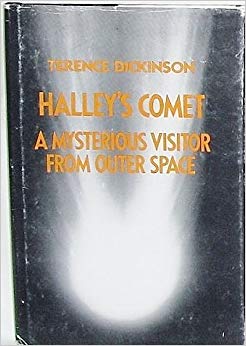
(Using clear, concise layman's terms, Dickinson presents a...)
Using clear, concise layman's terms, Dickinson presents a well-researched history of this most famous of comets, a flying mountain of ice which has decorated the sky dating back to at least 240 B.C.
http://www.amazon.com/gp/product/B0006EFIAW/?tag=2022091-20
1985
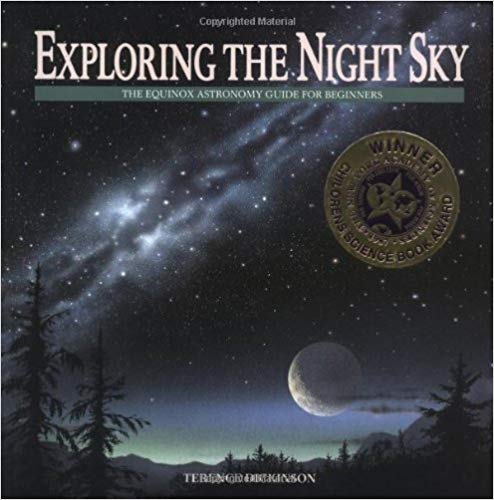
(The is a superb introduction to astronomy that is clear, ...)
The is a superb introduction to astronomy that is clear, concise, beautifully illustrated, and very "user friendly" no matter what the child's age
http://www.amazon.com/gp/product/0920656668/?tag=2022091-20
1987
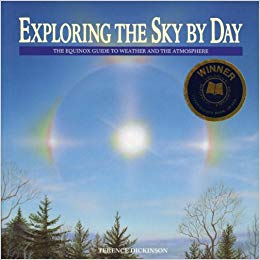
(Ideal for children, the book offers a fascinating insight...)
Ideal for children, the book offers a fascinating insight into such phenomena as lightning, the 10 types of clouds, storms, solar haloes, sundogs, and sunsets
http://www.amazon.com/gp/product/0920656714/?tag=2022091-20
1988
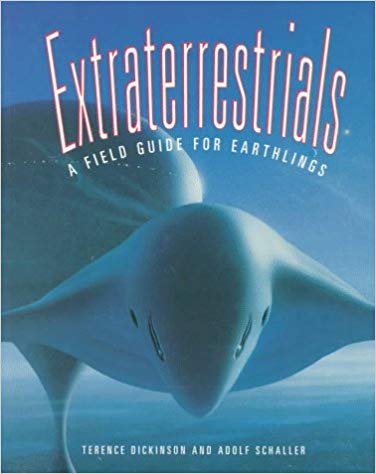
(A unique blend of science and imagination, the book writt...)
A unique blend of science and imagination, the book written in collaboration with Adolf Schaller will compel anyone who has ever thought about what and who might be out there
http://www.amazon.com/gp/product/0921820879/?tag=2022091-20
1994

(In this book for young readers, the award-winning astrono...)
In this book for young readers, the award-winning astronomy writer Dickinson travels on this gigantic odyssey on Other Worlds
http://www.amazon.com/gp/product/1895565707/?tag=2022091-20
1995

(The newest edition of The Backyard Astronomer's Guide inc...)
The newest edition of The Backyard Astronomer's Guide includes the latest data and answers the questions most often asked by home astronomers, from beginners to experienced stargazers
https://www.amazon.com/gp/product/1554073448/?tag=2022091-20
2008
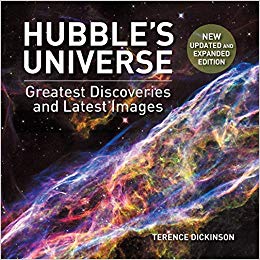
(The first edition of Hubble's Universe displayed 300 page...)
The first edition of Hubble's Universe displayed 300 pages of high-resolution celestial portraits selected by bestselling astronomy writer Terence Dickinson from the initial 22 years of the Hubble Space Telescope's exploration of distant galaxies
https://www.amazon.com/gp/product/1770859977/?tag=2022091-20
2017
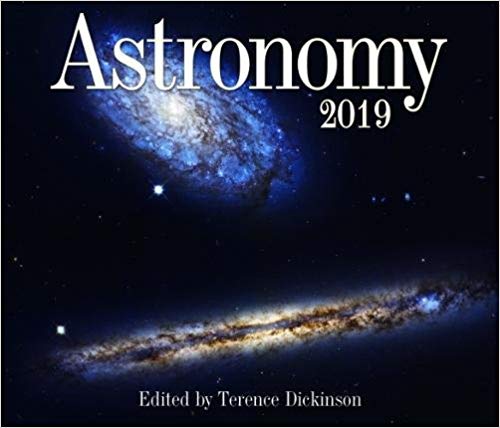
(Captured by the cameras of talented amateur astronomers a...)
Captured by the cameras of talented amateur astronomers and by the world's most powerful research telescopes, the universe's impressive wonders are presented in Astronomy 2019 in brilliant high-resolution color
https://www.amazon.com/gp/product/0228100372/?tag=2022091-20
2018
Astronomer author astrophotographer
Terence Dickinson was born on November 10, 1943, Toronto, Ontario, Canada. He is a son of Reginald Chapman Dickinson, an application engineer, and Anna Teresa Dickinson (maiden name Duz), a homemaker.
Dickinson discovered a passion for heaven and stars at the age of five when he saw a falling star for the first time. Unsatisfied with an answer how a star could fall, he initiated a kind of his own research which later became his profession for the whole life.
The young boy swallowed astronomy books one after another satisfying his interest. By the age of twelve, he had an extensive bundle of knowledge on space. To pursue his ‘researches’, Dickinson joined the Royal Astronomical Society of Canada three years later and then participated at his first so-called ‘star party’, a gathering of people lined up to take a look at the night sky with a help of telescopes. The event opened new horizons for Dickinson who strengthened in a decision to engage himself with astrophotography and astronomy.
After finishing high school, Dickinson enrolled at the astronomy courses of the University of Toronto at the beginning of the 1960s. However, his formal academic studies quickly lost out to a job offer with the McLaughlin Planetarium.
Terence Dickinson started his career almost right after high school. From 1964 to 1967 he worked as a technician at the Ontario Ministry of Transportation and Communications. After the speech at a conference at the Royal Astronomical Society of Canada, Dickinson was invited by the newly-appointed director of the McLaughlin Planetarium to join its staff as a scientific assistant. The position, responsible for creating and producing the planetarium’s programs and exhibits, was right up Dickinson’s alley.
Three years as a scientific assistant with the McLaughlin Planetarium qualified Dickinson for promotion. In 1970, the Stasenburgh Planetarium in Rochester, New York, offered him the position of assistant director. Dickinson accepted the offer and moved to Rochester with his wife Susan whom he had married in 1967.
During three years in Rochester, in addition to scripting shows for the planetarium, Dickinson began writing an astronomy column for a local newspaper. His first book, ‘Exploring the Moon and Solar System’, was published in 1971. Two years later, he wrote an essay on Venus in an international writing competition for astronomers and won second prize. The win was a significant one. Realizing that he had fared well in competition against writers of considerable reputation, Dickinson began to seriously consider writing as a career.
The 1973 start-up of the magazine ‘Astronomy’ coincided with Dickinson’s strong interest in writing. He contacted the publisher who was in search for materials. Soon, Terence Dickinson relocated with his family to Milwaukee where he was appointed an editor of a newly-born periodical.
Two years later, the Dickinsons were on the move again. The Ontario Science Centre in Toronto had offered Dickinson a senior editorial position in its publications department. Once in Toronto, however, Dickinson realized that he was doing less and less of the type of work he enjoyed most. In 1976, spurred by the realization, the Dickinsons decided to leave the bright lights of Toronto behind.
Dickinson launched his career as a freelance astronomer and astronomy writer from under the dark skies of rural Yarker, Ontario, where he could and still does explore the heavens from the convenience of his own backyard. An astronomy columnist at the Kingston Whig-Standard newspaper which he occupied right after the relocation from Toronto became his first step at this route. A year later, Terence Dickinson tried his hand as an educator starting to teach part-time at the local Saint Lawrence College.
Since then, Dickinson’s freelance career has been and continues to be wide-ranging and impressive. From 1978 to 1994, the author served as an astronomy commentator for ‘Quirks and Quarks’ program on CBC Radio. After, he joined the staff of the Discovery Channel. Simultaneously with the posts, beginning in 1981, he contributed as an astronomy columnist and author of hundreds of articles to such periodicals as ‘Nightsky’, ‘The Universe’ and ‘Toronto Star’. Later he wrote articles for ‘The Equinox’, ‘Harrowsmith’, ‘Maclean’s’, ‘Omni’, and ‘Reader’s Digest’.
Memories of his own early years pushed Dickinson to write for young readers. ‘Exploring the Night Sky: The Equinox Astronomy Guide for Beginners’ and ‘Exploring the Sky by Day: The Equinox Guide to Weather and the Atmosphere’, two of his five books for children and pre-teens, have won Canadian and American book awards. In 1994, Dickinson departed from straightforward astronomy and presented young readers with ‘Extraterrestrials’ accompanied by full-color illustrations of well-known astronomy artist Adolf Schaller. A year after the publication, he became an editor of Sky News magazine and worked in that capacity till 2016.
In addition to his writing activity, Terence Dickinson has collaborated with various museums, science centers, educational institutions, and Hollywood science fiction movies as a consultant. He has also applied his combination of scientific knowledge and writing skills as a ghostwriter for the Trivial Pursuit board game. Dickinson is a frequent guest and speaker at professional societies, universities and colleges, and astronomy conventions throughout North America as well as the regular interview guest on Canadian radio and television.
Nowadays, Terence Dickinson is still living near Yarker, Ontario where he continues to study and enjoy the universe at his fully-equipped observatory on his backyard.

Terence Dickinson’s long-time passion for the night sky has made him a star. His enthusiasm for astronomy and his exceptional ability to present scientific concepts in terms that general audiences can understand have earned him celebrity status in the world.
His award-winning work as an author, columnist, commentator, consultant, and educator reaches out through books, newspapers, magazines, television, radio, classes, lectures, movies, and Hollywood movie makers.
Dickinson’s books have gone through several editions and have been translated into five languages. The number of copies of his debut bestseller, ‘NightWatch: A Practical Guide to Viewing the Universe’ has attended 800,000 exemplars. The writer’s photographs have been featured in various publications, including Australian Geographic and Reader's Digest. One of his photo masterpieces was also used by the United States Postal Service on its stamps.
In recognition of his contributions to advancing public interest in astronomy, Dickinson has been appointed a member of the Order of Canada. For outstanding achievement in advancing appreciation of astronomy, he has received the Astronomical Society of the Pacific’s Klumpke-Roberts Award, previously presented to Carl Sagan and Isaac Asimov.
The International Astronomical Union, citing him as ‘Canada’s foremost popularizer of astronomy,’ has named Asteroid #5272 ‘Dickinson’ in his honor.
(The first edition of Hubble's Universe displayed 300 page...)
2017(Captured by the cameras of talented amateur astronomers a...)
2018(Using clear, concise layman's terms, Dickinson presents a...)
1985(The newest edition of The Backyard Astronomer's Guide inc...)
2008(A unique blend of science and imagination, the book writt...)
1994(Ideal for children, the book offers a fascinating insight...)
1988(The is a superb introduction to astronomy that is clear, ...)
1987(In this book for young readers, the award-winning astrono...)
1995(This fact-filled guide answers fifty questions to the fin...)
1993(The Fourth Edition of a bestseller book by Terence Dickinson)
1983
Quotations:
"At nine or ten I made the jump. There was one book in particular. The Conquest of Space. I remember opening the book and seeing these fantastic paintings, landscapes of other planets. I can remember turning the pages and seeing for the first time somebody showing me what it might really be like out there."
"Children want depth of information just like adults, but in age-appropriate terms that they can digest. I never dumb it down for them."
"Most of their standard plots [about extraterrestrials] are just plain silly. That a civilization advanced enough to make contact with us, would only want to kill us, enslave us, or eat us! Personally, I find it much easier to think of a universe that has other life in it, than a universe with none. I like to think we are not alone."
"I want to do what I’m doing for as long as I can. There’s just so much more to know and see, and I’m still excited as a kid about new discoveries. I’ll never run out of things to write about – I’ll just run out of time."
Terence Dickinson is an enthusiastic person.
Quotes from others about the person
"There are several reasons why Dickinson is so good at what he does. The chief of these is undoubtedly his enthusiasm for his subject, which has fired him since boyhood and been the driving inspiration for his career. Next to that is his talent for rendering the inaccessible accessible and making the unfathomable seem understandable. You could call him a reductionist; but one who manages to reduce the immensity of the universe to human terms, without losing any of its awesome splendor in the process." Tonia Morton, Fifty-Five Plus Magazine contributor
"His books approach astronomy °n two levels: one is to give guidance for personal observation, and the other is ‘strictly cerebral – visualizing what other worlds are like, getting the big Picture." Maureen Garvie, author
Terence Dickinson married a publishing consultant Susan Beard on June 24, 1967.
